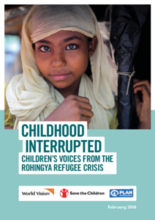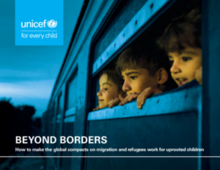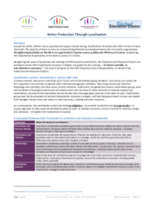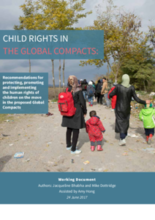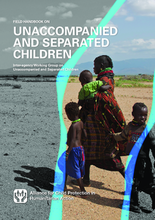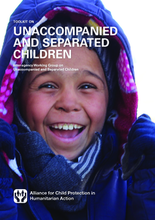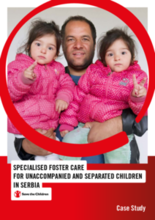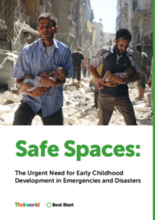Displaying 71 - 80 of 198
This short video was designed for newly hired child protection in humanitarian action (CPHA) staff, as well as child protection staff who want to learn more about working in emergency settings - and the CPMS in particular.
This report presents the results of a consultation - organised by Plan International, Save the Children and World Vision International - which surveyed children in Cox’s Bazar, Bangladesh from refugee communities (who identify themselves as Rohingya) and children from host communities.
This report highlights initiatives underway that work towards addressing the care and protection of refugee, migrant and displaced children – initiatives that can be replicated around the world.
This technical note presents a conceptual framework for localisation in protection and education coordination. It includes a description of the role of coordinators and coordination groups in localization and examples of how localization can be integrated in the humanitarian program cycle.
This working document by the Initiative for Child Rights in the Global Compacts, a multilateral initiative supported by 26 organizations, provides goals, targets and indicators with respect to six priority issues involving refugee and migrant children.
This handbook offers comprehensive practical guidance on working with unaccompanied and separated children (UASC) in emergency settings.
The Toolkit on Unaccompanied and Separated Children compiles 56 tools for the use of practitioners working with unaccompanied and separated children (UASC).
This Save the Children case study aims to briefly describe the process of developing specialised training package for foster care of Unaccompanied and Separated Children in Serbia, its key components and main lessons learned from the process.
This paper from Best Start (a global campaign for Early Childhood Development led by children’s charity Theirworld) emphasizes the need for holistic early childhood development (ECD) programs - Safe Spaces - for young children in emergency situations.
Compared to children in other placements, there is much less known about the characteristics and needs of children in the UK who are returned to their birth parents with a care order still in place.

